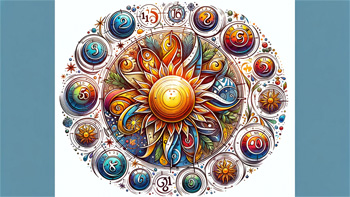The Gregorian Calendar, introduced in 1582, is the calendar most widely used across the world today. It was named after Pope Gregory XIII, who initiated its adoption. The calendar was designed to correct the inaccuracies of the Julian Calendar, particularly concerning the annual accumulation of extra time. By the 16th century, the Julian Calendar had fallen out of sync with the solar year by approximately 10 days. This discrepancy impacted the observance of Easter, traditionally aligned with the spring equinox, prompting the need for reform.
The Council of Trent (1545–1563) authorized Pope Gregory XIII to reform the calendar. To address the issue, the Pope enlisted the help of astronomers and mathematicians, including Aloysius Lilius and Christopher Clavius, to devise a more accurate calendar system. The Gregorian Calendar proposed a refinement to the leap year system and introduced a method to keep the calendar more aligned with the Earth's revolutions around the Sun.
Leap Year Reform and Calendar Alignment
In the Gregorian Calendar, a year is a leap year if it is divisible by 4. However, years divisible by 100 are not leap years unless they are also divisible by 400. This rule corrected the Julian Calendar's overestimation of the length of a year. As a result, the Gregorian Calendar has an average year length of 365.2425 days, closely matching the solar year of approximately 365.2422 days. This small change significantly improved the accuracy of the calendar in reflecting the actual time it takes for the Earth to orbit the Sun once.
To realign the calendar with the solar year, Pope Gregory XIII decreed that 10 days be dropped from the month of October in 1582. October 4, 1582, was followed by October 15, 1582. This adjustment rectified the accumulated discrepancy of the Julian Calendar since the Council of Nicaea in 325.
Global Adoption and Resistance
The introduction of the Gregorian Calendar was not universally accepted immediately. It was first adopted by Catholic countries such as Spain, Portugal, and Italy. Protestant and Orthodox countries were initially resistant, viewing the reform as an attempt by the Catholic Church to exert influence. However, as the practical benefits of the Gregorian Calendar became apparent, more countries began to adopt it. Great Britain and its colonies, for example, adopted the Gregorian Calendar in 1752, by which time the Julian Calendar was 11 days out of sync.
The adoption of the Gregorian Calendar varied across the world, with some countries transitioning as late as the 20th century. This gradual adoption led to a complex period in history, where different countries were using different calendars, complicating international communication and record-keeping.
Cultural and Historical Impact
The Gregorian Calendar's adoption has had a profound cultural and historical impact. It not only standardized the measurement of years across most of the world but also influenced various aspects of society, including agriculture, religion, and legal systems. The calendar played a crucial role in the development of astronomy and was instrumental in the advancement of navigation, aiding the Age of Exploration.
Culturally, the adoption of the Gregorian Calendar signified a shift towards a more scientific approach to timekeeping and the recognition of the need for international standardization in the era of global exploration and trade.
Current Relevance and Legacy
Today, the Gregorian Calendar is the de facto international standard for civil use. Its precision and alignment with the Earth's solar year make it a reliable tool for timekeeping. Despite its widespread adoption, the calendar is not without its critics who point out its Christian-centric design and the continued use of the Julian Calendar by some Orthodox churches.
The Gregorian Calendar's legacy is evident in its integration into modern technology, including computing and telecommunications, which rely on its structure for scheduling and timekeeping. As the world becomes increasingly interconnected, the importance of a common calendar system is more evident than ever, underscoring the lasting impact of Pope Gregory XIII's reform on our daily lives and global systems.
